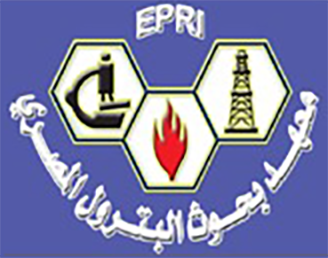Article Type
Research Paper
Abstract
The study area for oil fields in Egypt's Burg El Arab (BEA) area relies on 3D reservoir modeling that integrates seismic and well data using geostatistical methods. This study focuses on the Upper Cretaceous Bahariya Formation, which holds significant hydrocarbon potential. To gain a comprehensive understanding of these reservoirs, 3D static reservoir modeling is used, accurately representing the reservoir's varying ranges and anisotropies. The construction of the 3D grid involves interpreting seismic data to model the fault system and the stratigraphic horizon. Tectonic evaluations based on the structural model of the Bahariya Formation reveal a trapping mechanism consisting of a system of normal faults trending NW-SE and WNW-ESE, resulting from tectonic deformations during the Cretaceous-Early Tertiary period. These faults create a symmetrical anticlinal fold divided by normal faults dipping toward the NNW and SSE directions. Petrophysical properties and facies are incorporated into the 3D grid using stochastic algorithms, enabling the simulation of reservoir properties distribution. The petrophysical results prioritize the Middle and Lower Bahariya reservoirs as moderate to good reservoirs, exhibiting favorable facies distribution with low water saturation, acceptable porosity, and a moderate net-to-gross ratio. The modeled Bahariya reservoirs display economically significant hydrocarbon accumulation, with Original Oil In Place (OOIP) values ranging from 211 to 371 million stock tank barrels (MMSTB) for the Middle and Lower Bahariya reservoirs, respectively. The 3D static modeling of Bahariya reservoirs guides the development of oilfields and optimization of production strategies in the Burg El Arab area.
Keywords
Bahariya Formation; Burg El Arab area; Well log analysis; Seismic interpretation; 3D static modeling
Recommended Citation
Abdel-Fattah, Mohamed; Hanafy, Mahmoud; Hamdan, Hamdan; and Attia, Tamer
(2024)
"Integrated 3D Reservoir Modeling and Tectonic Evaluation of the Upper Cretaceous Bahariya Formation in the Burg El Arab Area, Egypt: Implications for Hydrocarbon Exploration and Production Strategies,"
Egyptian Journal of Petroleum: Vol. 33
:
Iss.
2
, Article 8.
Available at: https://doi.org/10.62593/2090-2468.1026
Creative Commons License

This work is licensed under a Creative Commons Attribution-NonCommercial-No Derivative Works 4.0 International License.







